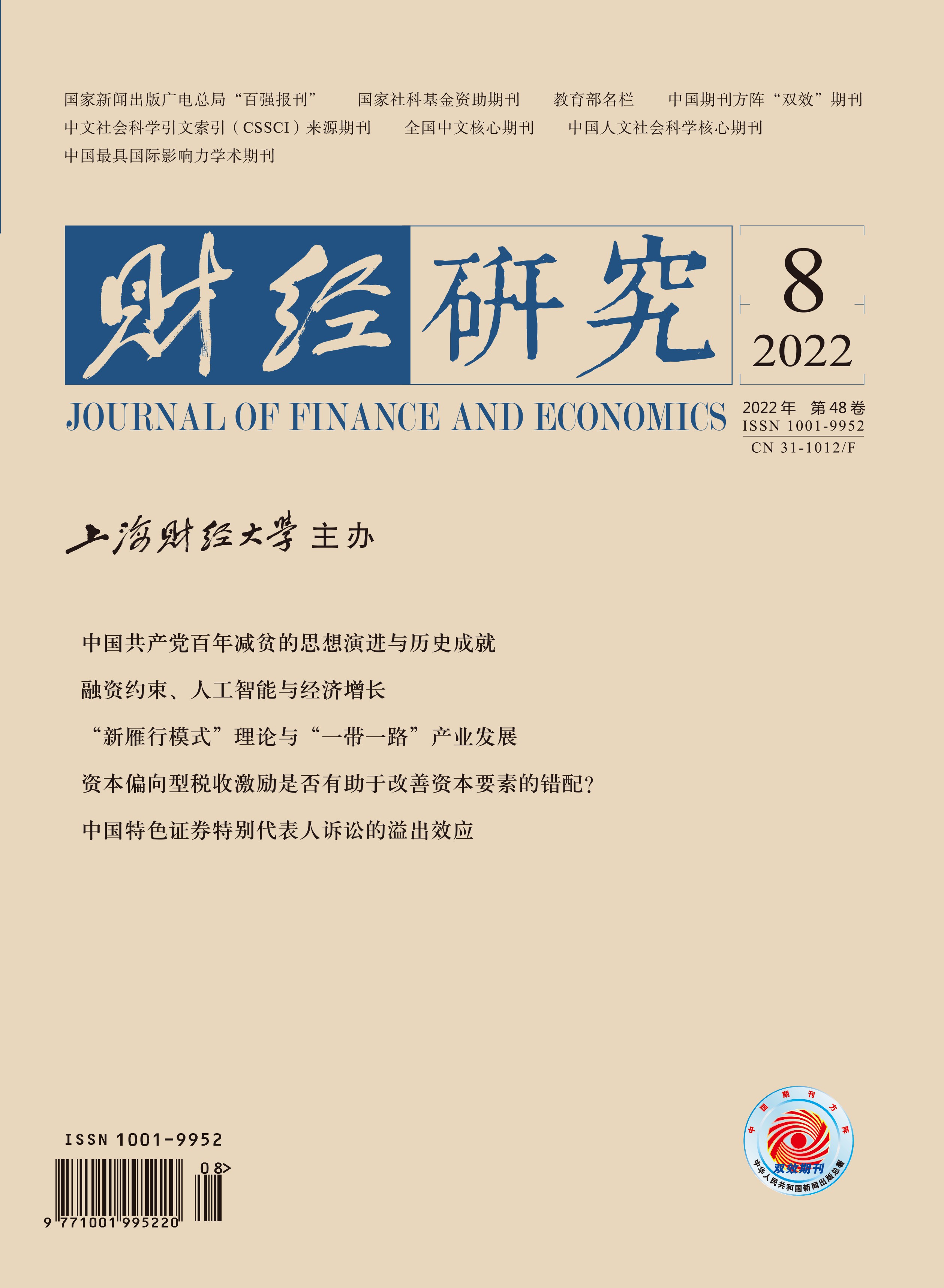智能制造是我国制造强国建设的主攻方向。推动人工智能技术应用和发展以及提升智能化生产水平,对我国实现制造强国战略目标和构筑国际竞争新优势具有深远意义。文章构建包含融资约束、内生人工智能技术创新和劳动力市场摩擦的基于任务的模型,讨论融资约束如何影响智能化生产水平,进而如何影响产出和就业水平。文章研究发现:第一,由于不同任务实现智能替代的难易程度存在差异,放松融资约束能够促进企业人工智能技术研发,提高实现智能化生产的任务占比,从而促进智能资本使用。第二,智能化生产水平的提高通过机器替代效应和岗位创造效应对不同技能劳动力产生异质性影响,而从总体层面上看,智能化生产水平提高促进了产出增加,降低了总体失业率。因此,智能制造转型升级过程中应充分发挥金融市场的作用,并需要协调智能制造与就业的关系,以降低机器替代对就业的负向冲击。具体措施包括加强企业进入激励、促进行业融合发展、消除劳动力市场壁垒以及转变劳动力技能结构等。文章的研究对我国当前推动智能化生产转型升级有一定的参考价值。
融资约束、人工智能与经济增长
摘要
参考文献
5 孔高文,刘莎莎,孔东民. 机器人与就业−基于行业与地区异质性的探索性分析[J]. 中国工业经济,2020,(8):80−98. DOI:10.3969/j.issn.1006-480X.2020.08.006
12 杨光,侯钰. 工业机器人的使用、技术升级与经济增长[J]. 中国工业经济,2020,(10):138−156. DOI:10.3969/j.issn.1006-480X.2020.10.008
14 郑江淮,冉征. 智能制造技术创新的产业结构与经济增长效应−基于两部门模型的实证分析[J]. 中国人民大学学报,2021,(6):86−101. DOI:10.3969/j.issn.1000-5420.2021.06.012
16 Acemoglu D, Restrepo P. The race between man and machine: Implications of technology for growth, factor shares, and employment[J]. American Economic Review,2018,108(6): 1488−1542. DOI:10.1257/aer.20160696
17 Acemoglu D, Restrepo P. Robots and jobs: Evidence from US labor markets[J]. Journal of Political Economy,2020,128(6): 2188−2244. DOI:10.1086/705716
18 Acemoglu D, Restrepo P. Demographics and automation[J]. The Review of Economic Studies,2022,89(1): 1−44. DOI:10.1093/restud/rdab031
19 Aghion P, Bergeaud A, Cette G, et al. Coase lecture: The inverted-U relationship between credit access and productivity growth[J]. Economica,2019,86(341): 1−31. DOI:10.1111/ecca.12297
21 Arntz M, Gregory T, Zierahn U. Revisiting the risk of automation[J]. Economics Letters,2017,159: 157−160. DOI:10.1016/j.econlet.2017.07.001
22 Battisti M, Felbermayr G, Peri G, et al. Immigration, search and redistribution: A quantitative assessment of native welfare[J]. Journal of the European Economic Association,2018,16(4): 1137−1188. DOI:10.1093/jeea/jvx035
23 Beck T, Levine R. Industry growth and capital allocation: Does having a market- or bank-based system matter?[J]. Journal of Financial Economics,2002,64(2): 147−180. DOI:10.1016/S0304-405X(02)00074-0
24 Brown J R, Martinsson G, Petersen B C. Do financing constraints matter for R&D?[J]. European Economic Review,2012,56(8): 1512−1529. DOI:10.1016/j.euroecorev.2012.07.007
25 Cortes G M, Jaimovich N, Siu H E. Disappearing routine jobs: Who, how, and why?[J]. Journal of Monetary Economics,2017,91: 69−87. DOI:10.1016/j.jmoneco.2017.09.006
26 Frey C B, Osborne M A. The future of employment: How susceptible are jobs to computerisation?[J]. Technological Forecasting and Social Change,2017,114: 254−280. DOI:10.1016/j.techfore.2016.08.019
27 Hémous D, Olsen M. The rise of the machines: Automation, horizontal innovation, and income inequality[J]. American Economic Journal: Macroeconomics,2022,14(1): 179−223. DOI:10.1257/mac.20160164
28 Lankisch C, Prettner K, Prskawetz A. How can robots affect wage inequality?[J]. Economic Modelling,2019,81: 161−169. DOI:10.1016/j.econmod.2018.12.015
29 Liu Y. Labor market matching and unemployment in urban China[J]. China Economic Review,2013,24: 108−128. DOI:10.1016/j.chieco.2012.10.006
30 Lu C H. The impact of artificial intelligence on economic growth and welfare[J]. Journal of Macroeconomics,2021,69: 103342. DOI:10.1016/j.jmacro.2021.103342
31 Ma H, Qiao X, Xu Y. Job creation and job destruction in China during 1998-2007[J]. Journal of Comparative Economics,2015,43(4): 1085−1100. DOI:10.1016/j.jce.2015.04.001
32 Nedelkoska L, Quintini G. Automation, skills use and training[R]. OECD Social, Employment and Migration Working Papers No.202, 2018.
33 Oberfield E, Raval D. Micro data and macro technology[J]. Econometrica,2021,89(2): 703−732. DOI:10.3982/ECTA12807
34 Prettner K, Strulik H. Innovation, automation, and inequality: Policy challenges in the race against the machine[J]. Journal of Monetary Economics,2020,116: 249−265. DOI:10.1016/j.jmoneco.2019.10.012
引用本文
章潇萌, 刘相波. 融资约束、人工智能与经济增长[J]. 财经研究, 2022, 48(8): 63-77.
导出参考文献,格式为:





 5112
5112  5024
5024

